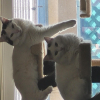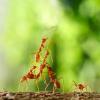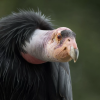Hello and welcome everyone to my first official update on this forum. I will list all of the sp. that I will update down here.
- Polyrhachis laevissima
- Oecophylla smaragdina
- Odontomachus sp.
- Cataulacus granulatus
- Two currently unknown sp.
- Camponotus parius
So let us start with what I suspect is Polyrhachis laevissima.
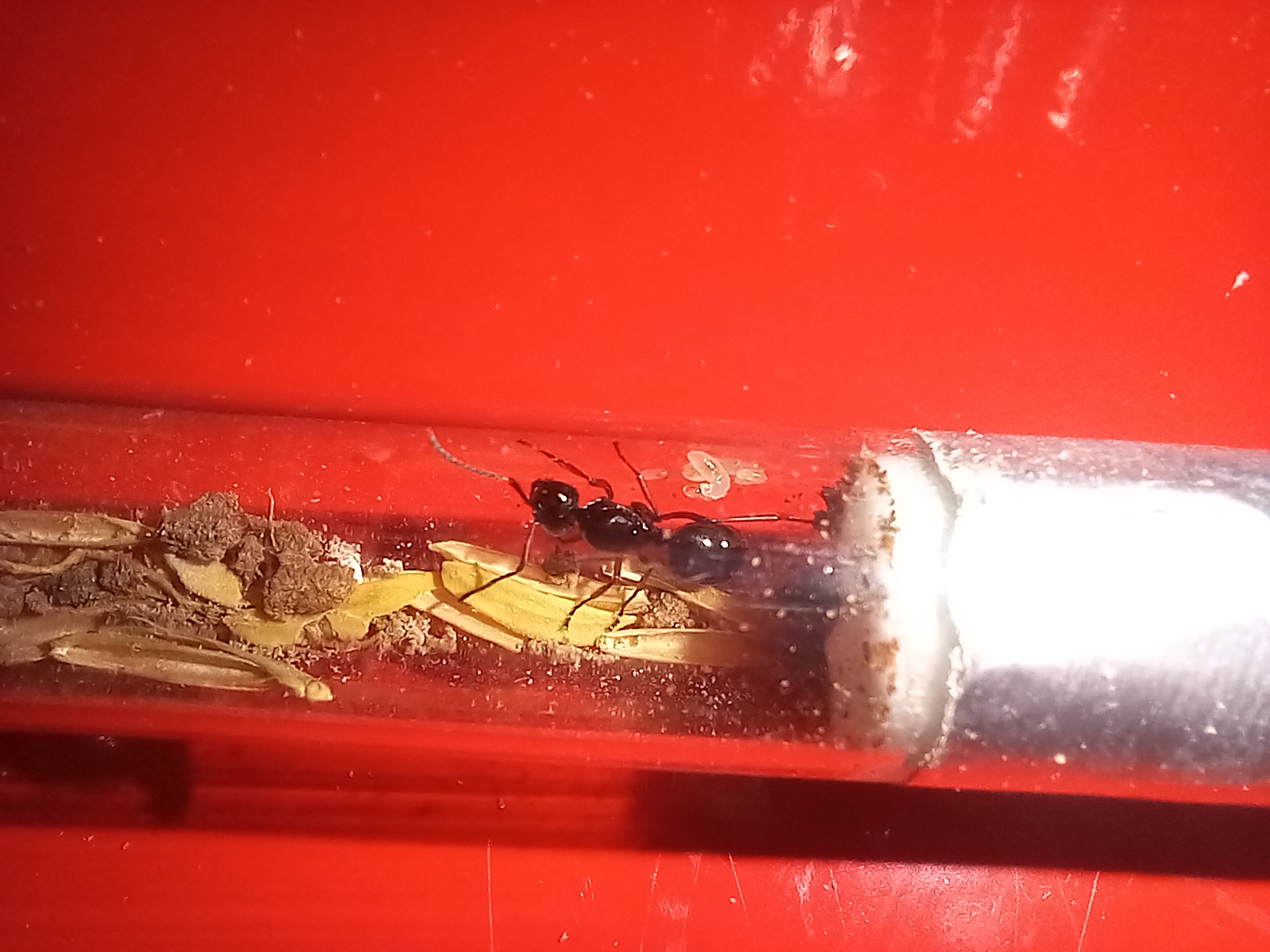
So as you can see, some of her eggs has already hatched, it's now about in the middle of the second week of her eggs incubating. I feed her mainly dubia roach nymths and I replace them once in every 4 days. I try not to check up on her too much, so she can get her nanitics. I have also scattered debris in her [censored] outwrold some of which you can see inside of her tube, and I normally would place a cardboard cutout onside of the test tube in order to add a sense of security inside for the ants, however I have purposely not done it with this dealate, because I am hoping once the larvae matures that she could use it to weave up her own wall. Kind of like what Oecophylla dealates do when their larvae matures, however I am not sure if Polyrhachis dealates do this when they are on their own.
Next up we have Oecophylla smaragdina

This is her progress so far, and honestly it looks pretty good. This is so far the only photo I took of her, because her vision is better than mine and so I want to avoid stressing her as much as possible. I saw her in the corner of my eye outside on the window as I was walking down the stairs from the second floor to the first floor. She was in a very ticky place to get, but I managed. After I caught her I put her in a container instead of a test tube, as SYUTEO recommended me do, because she can die of her own formic acid in a test tube. I'm also puzzled about their future, if I make a terrarium for them, then I will first wait for them to hit 50 workers or so to make sure that they are ready for the move. However I don't really want to make them a terrarium and that is, because once they constructed their leaf nest, I may never see the wonderful warrior of a queen again and that makes me sad. I'm thinking of making small nests that I will connect to the outworld, and instead of increasing the size of their nest as the colony grows, I will just add more small nests. What do you guys think? Any thoughts on this matter will be much appreciated.
And now we have good old Odontomachus sp.

Sorry for the photo, they seem to have stuck wet cotton onto the surface of the tube, as a result massively obscuring their view making it harder to spot mold growth on the cotton and cardboart, so I will have to move them. This is also the very second queen I ever caught, and she only now has 2 workers, I don't know if her eggs and/or larvae die for a reason unknown to me and then she eats them, or if she just fattens them up and outright eats them. But so far her pupae has had a 100% success rate with pupating, although they only had two so far so. Regardless trap-jaw ants were and still are one of my favorite ant species.
Time for C. granulatus to make thier appearance
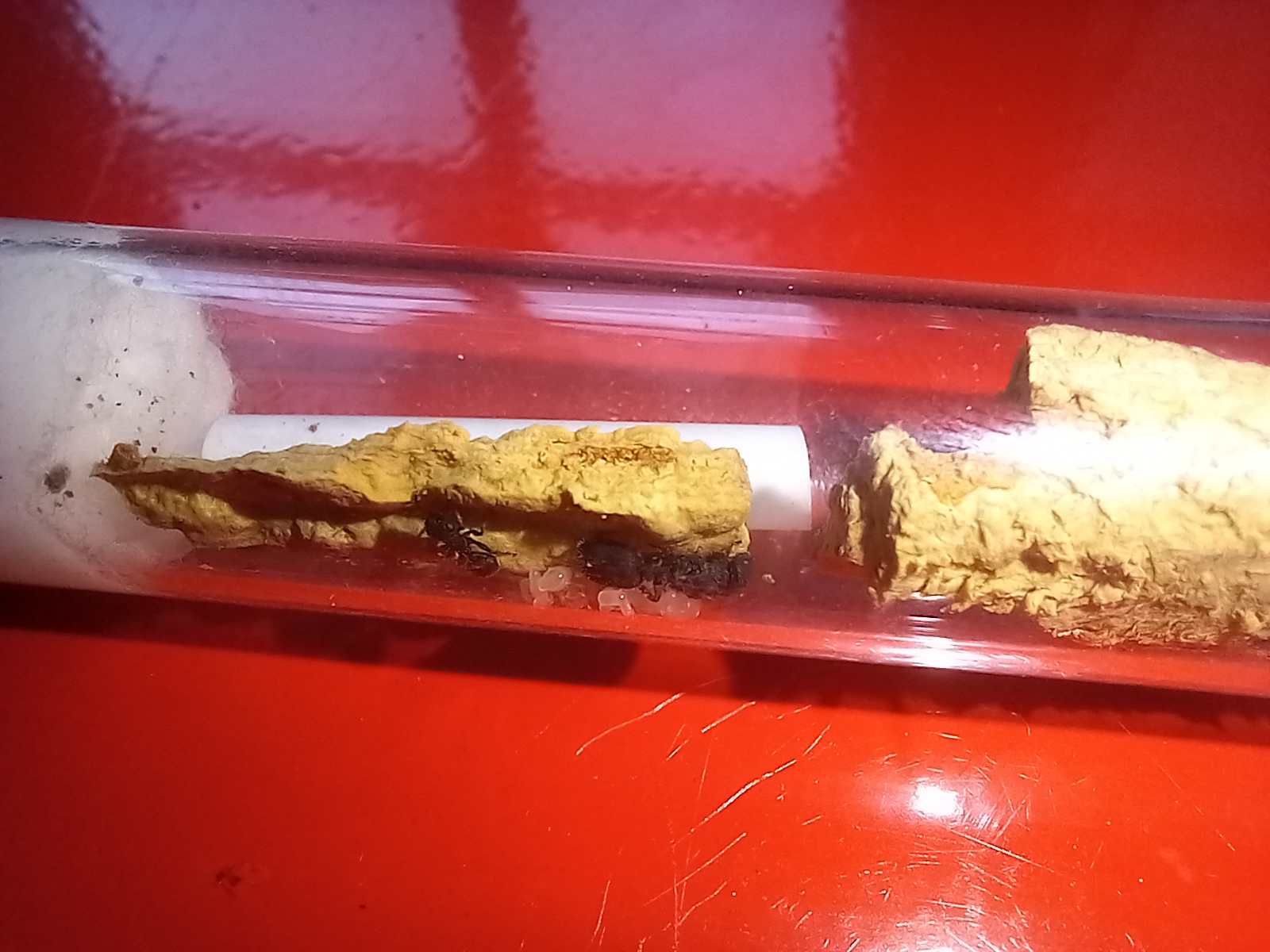
I love these guys, they way they look is just amazing. And I was very, and let me emphasize VERY surprised with their progress, the queen took about a week or two to lay her eggs. Ok not that great a start, but when she chose a spot, she layed like three eggs at the start, spaced out a day from each other. Those eggs survived and hatched one by one, and she layed more eggs to replace them, the eggs took about a week to hatch (note: I am very bad at keeping track of these things, I don't write it down for some reason, but I should start to). About a week later the larvae started to pupate one by one, then after about a week or two. We got the first worker! And of course the others followed suit, now she has three workers, two pupae, one turning yellow which indicates that she is nearly ready to enclose and the other one is still white, and of course she has a bunch of eggs and larvae. This has been such a big contrast compared to my other semi-claustral species. I don't know if it is something that I am doing right, and if it is then I don't know what it is. Regardless I hope this progress continues, I so hope I get them to maturity.
Now it is time to introduce the unknown fellas
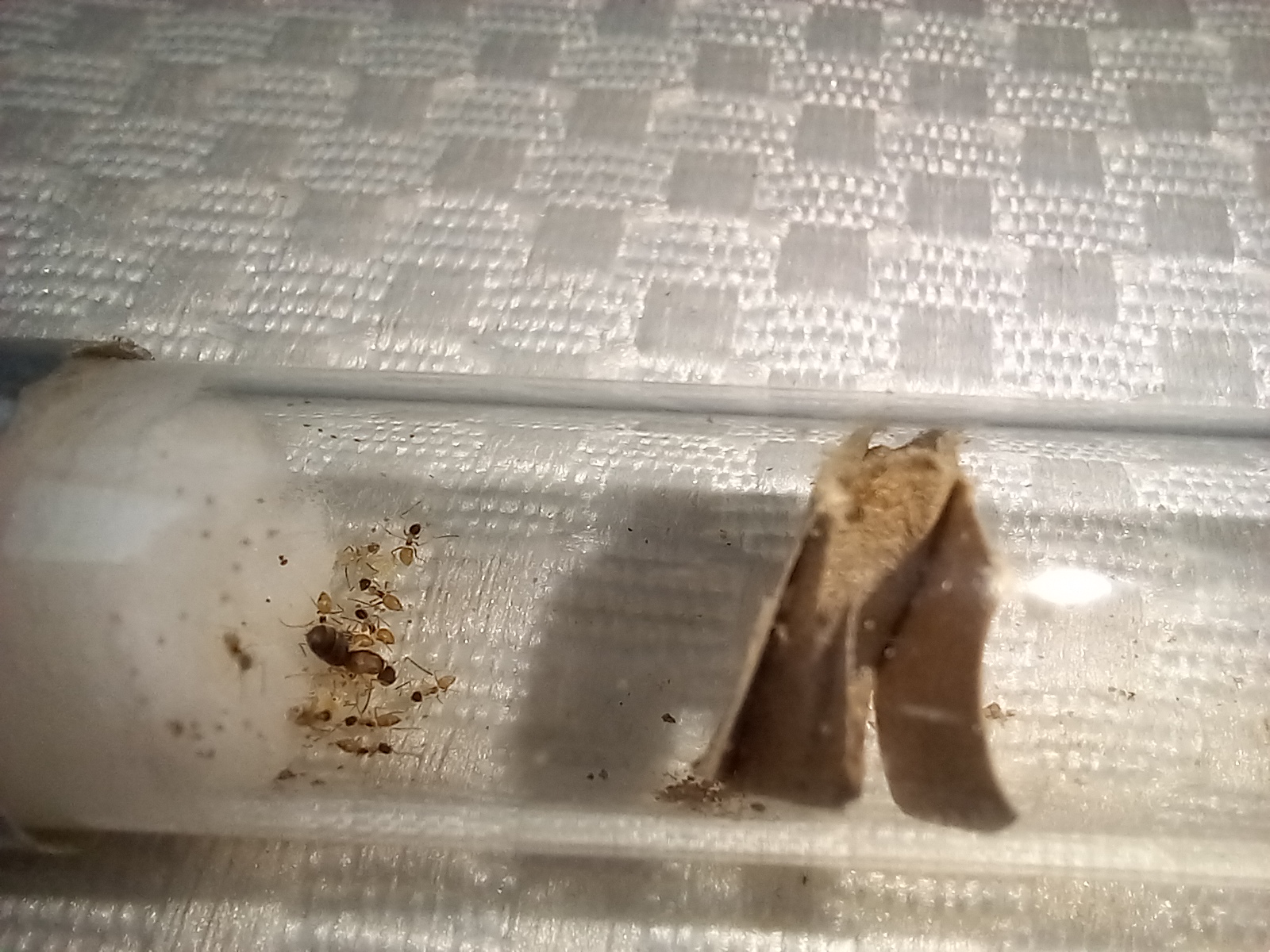
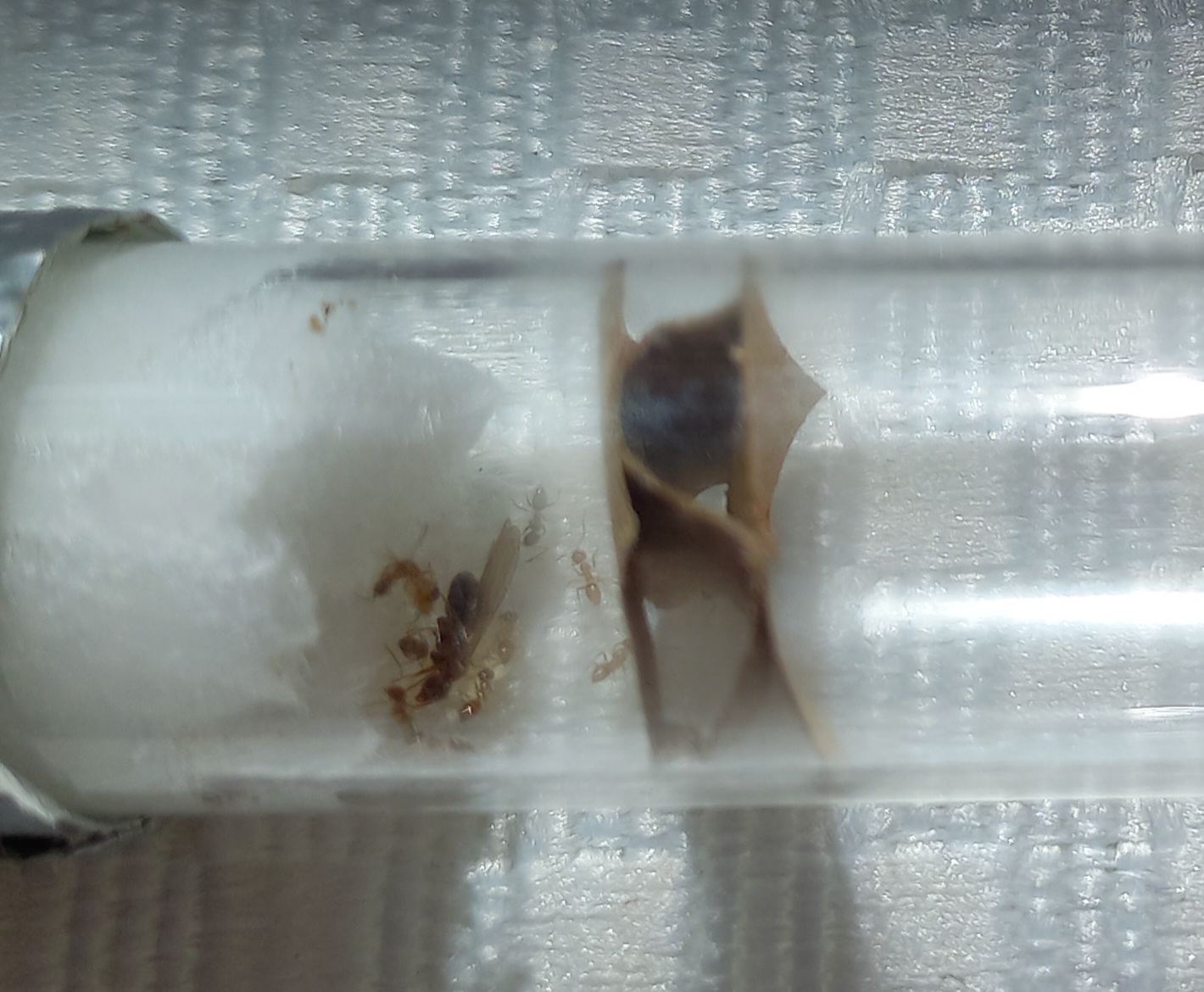
The brown queen colony is a small wild colony that I kidna-uh, adopted. And their doing pretty well, brood in all stages of development and a few workers (did not count them)
The black/winged queen colony is one that I raised myself from a single queen, she flew onto my arm while I was eating dinner and I, a certified ant keeper had a container on me to catch her. She had appeared skittish whenever I checked on her in the test tube, so I just treated her like my Phedole parva, and only check up on them 1 once n every 3 weeks. She founded within a month at about the 4rth week, now she has 11 workers and they got taken out of the Foundation Isolation, and go a spot on the ant keeping table with the rest of the colonies.
Let us end with the one and only C. parius
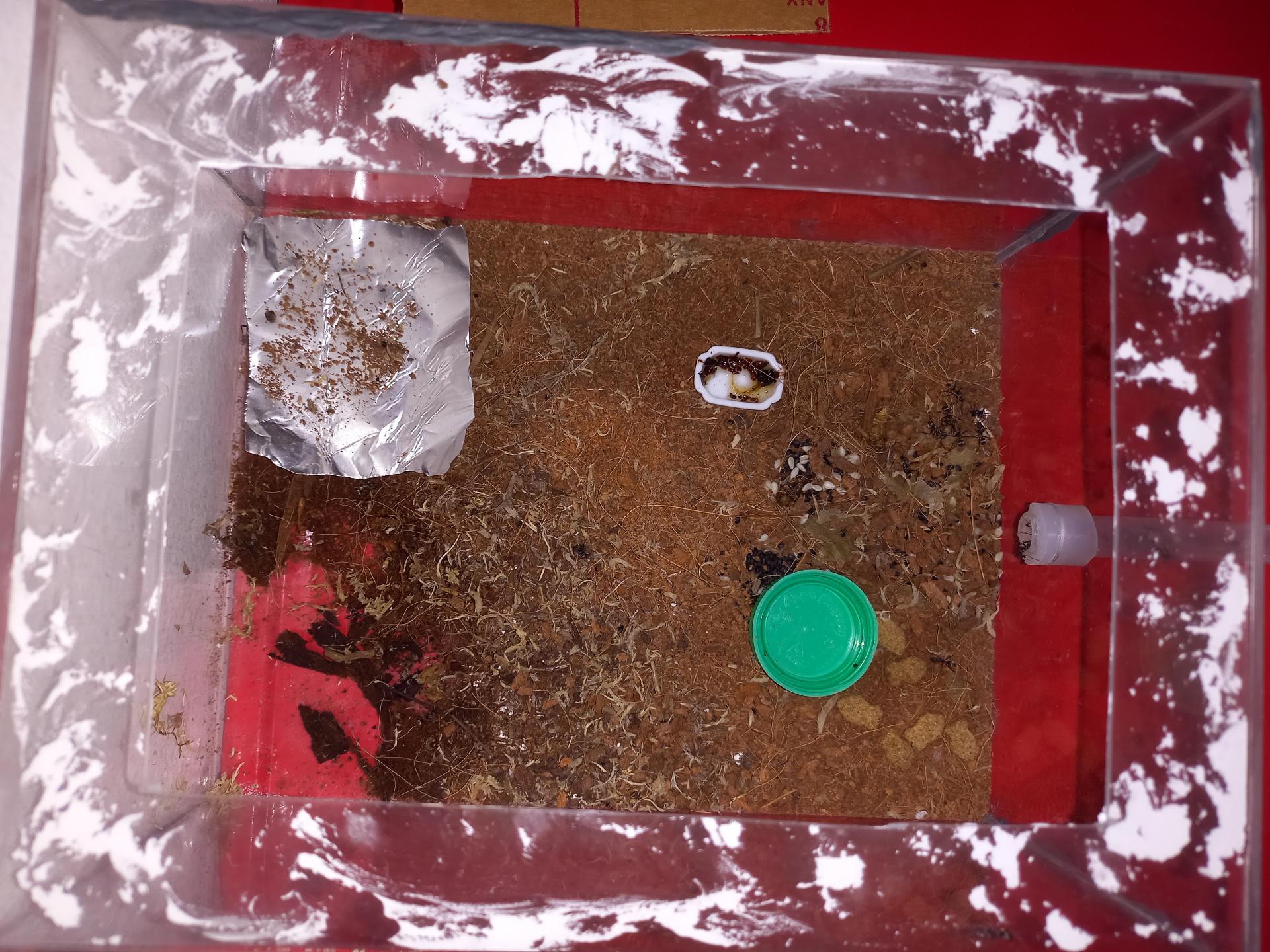
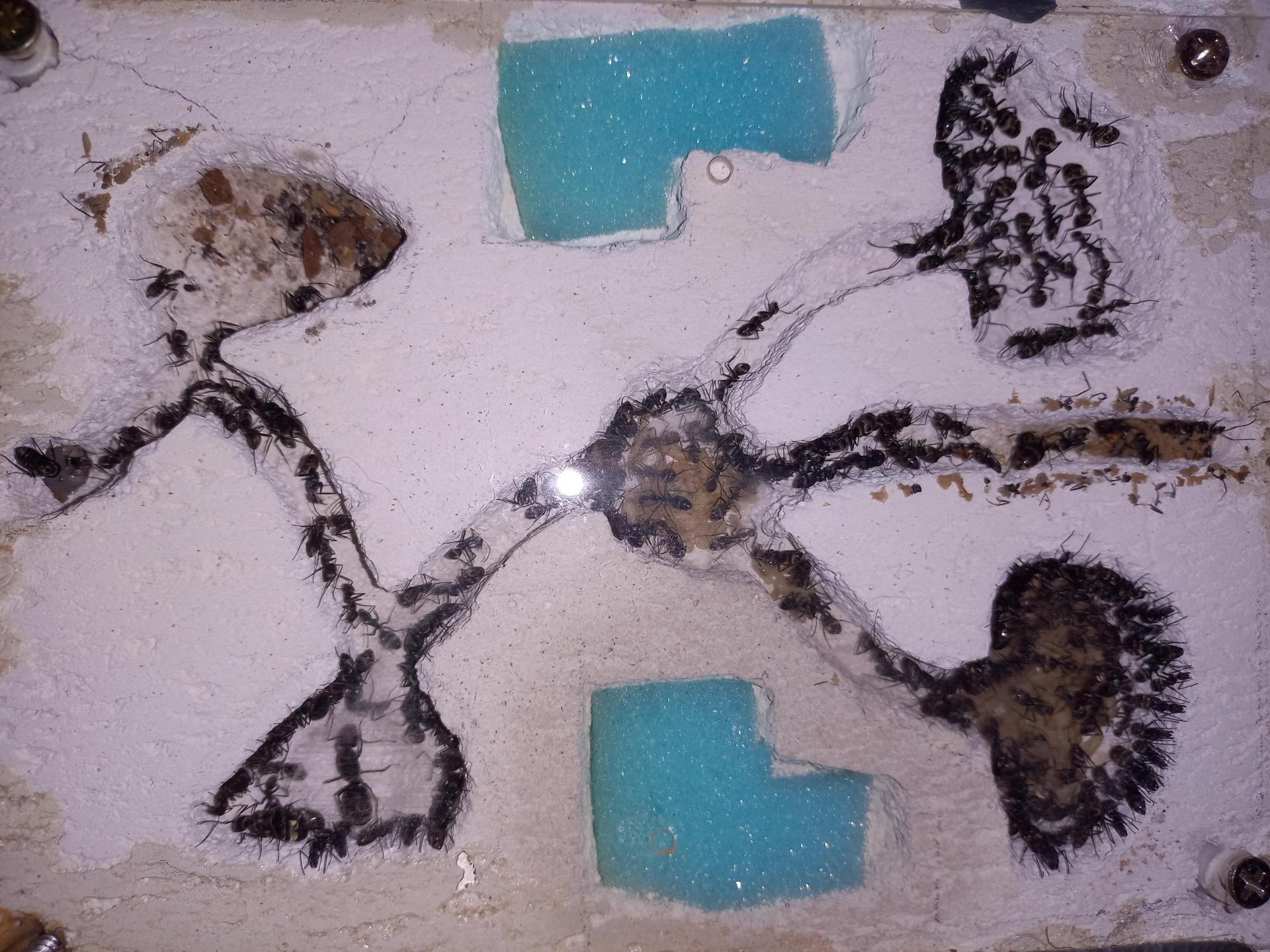
For these guys I provided a [censored] outworld upgrade and a [censored] nest upgrade, ant keeper of the week yay, "clapping noises in the background". In all seriousness I do fully intend on replacing the nest and outworld with better ones. This colony is from the first ever queen I caught and is the first ever colony I have, and despite all the very stupid mistakes I made early on and what I put my poor queen through, they still managed to not only succeed, but they thrived somehow. I have had this colony for almost 5 months now, and their very close to 200 workers, in fact they may already be 200 workers, they still have a whole bunch on pupae to enclose and the next generation of larvae are growing. Majors although plentiful, and still not brave enough to go out and help process the food. Although some of them to take up defensive positions, most just stay dormant, but they do serve as the colony's repletes, so I guess they aren't too useless.
And that about concludes my update this week, thanks for your time and I hope you enjoyed.











